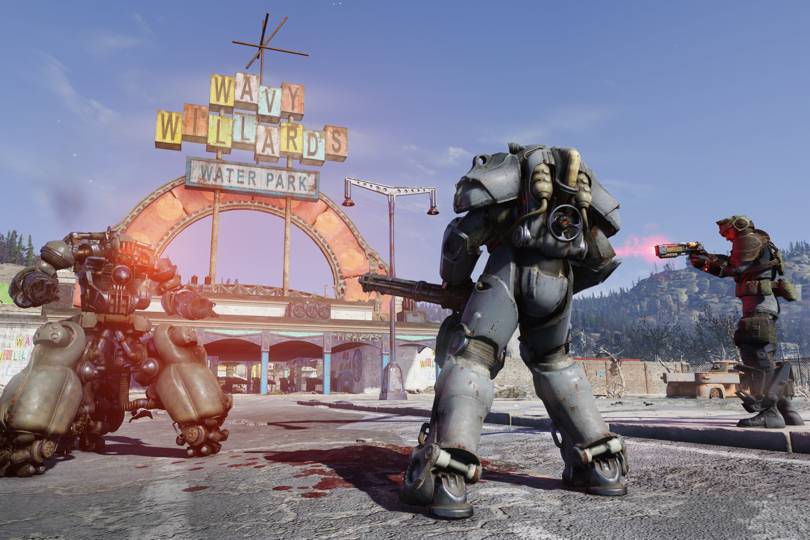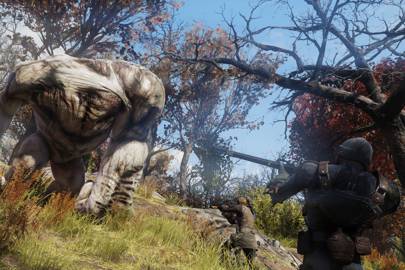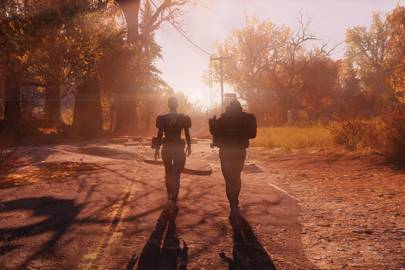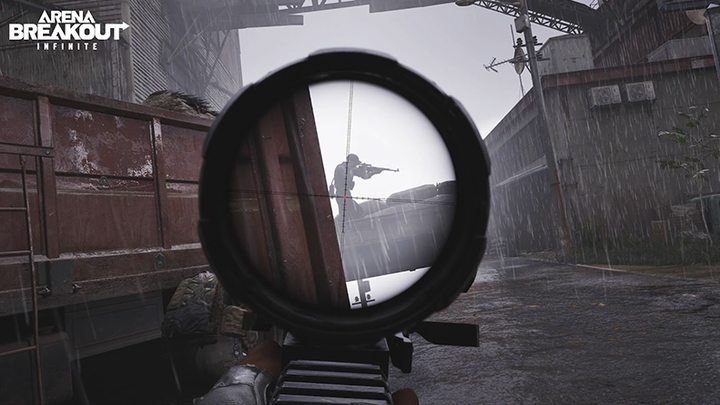Fallout 76's online gamble has wrecked the apocalypse

Starting Fallout 76 is a strange experience, especially if you're a returning player lured back to the retro-futuristic apocalyptic world laid out in Fallout 3, New Vegas, and Fallout 4. At a glance, it's comfortingly similar – you're once again the last one out of your Vault-Tec nuclear bunker, off to explore what remains of a nuclear-ravaged North America.
All the trappings are there, from the 1950s-style imaginings of what advanced technology would look like – streamlined rocket cars, quaint computers that look more like black and white TVs, outlandish weapons – to the grisly mutant creatures that stalk the irradiated wastelands. But the deeper you get into Fallout 76, the more you realise that these are just trappings – the quintessential magic that makes a Fallout game work just isn't there anymore. This is a very different game that happens to be clad in Falloutdrag.
The main reason for this is developer Bethesda's attempt to redefine what a Fallout game is. Whereas earlier instalments are epic single-player RPGs where your every choice matters, in Fallout 76, the wasteland is not your own. You're online now, with other players inhabiting the same space – up to 24 of them in each instance of a game world, and they have as much influence in what goes on in your game as you do.
Sometimes that will bring major changes, such as launching nukes from hidden bunkers, making certain parts of the map inaccessible or highly dangerous. Other times, you'll find them to be simple passersby, pursuing their own plot threads while crossing your path. Maybe they'll lend a hand while you're being mauled by a pack of mutant mongrels, maybe they'll leave you to it.
The problem is, Bethesda seems to be trying to please all masters. You can still, ostensibly, play Fallout 76 as a solo experience, never teaming up with others if you don't want to. Yet if you don't, you'll find areas or missions you simply can't handle alone. The game actively pushes you to form alliances, forming raiding parties or even potentially building communities together.

At the very least, it wants you to communicate with others. A quick menu of emotes at least makes it easy to convey your intentions, ranging from a simple wave hello to invites to form a team, or expressions of confusion or anger. To some credit, Bethesda also tries to guide player behaviour towards the positive, with hefty debuffs if you attack other players who don't want to engage in combat with you.
Yet in walking the line between solo and multiplayer in an inherently shared world, Fallout 76 ends up feeling like a halfway house of an MMO. It has all the structures in place to be one – including familiar MMO mechanics such as having to return to where you last died to regain items, or real time events that spawn randomly across the map – but is too scared to change the address to "Fallout Online".
In having only two dozen other players in your game world, it can feel empty though, an issue compounded by the fact that real player characters seem to largely take the place of what would have been story driving side characters in earlier games. Almost every quest I've encountered to date has been a result of messages left on terminals, audio recordings left by the Vault's overseer, radio signals plucked from the ether, pushy robots, or some other disembodied mission giver. This is a lonely, empty world.
Compare to 2015's Fallout 4. I still remember encountering a community of intelligent Ghouls – zombie-like mutants who retain their human intelligence – who wanted to establish their own trading post and township after being chased out of the Diamond City metropolis. A relatively throwaway side quest in the grander scheme of the game, but an experience that lingers, that created a connection with the world and the bizarre inhabitants, all with individual personalities, that populated it. There are no similar moments in Fallout 76.
Moments of depth and nuance, unexpected encounters with strange but thriving factions, all are replaced with a string of missions that feel like shooting galleries. Without scripted characters filling the world, there's less incentive to stray from the path and look around for more to do, either. It's largely been a lot of trekking across mostly empty spaces, shooting things that move, then moving to the next directed space. By having other human players in your Fallout game, the world itself is robbed of its richness by their very existence.
But Fallout 76's problems run deeper. Bethesda leans more into survival mechanics here, forcing you to observe not just your health, ammo, and radiation levels as in past games but hunger, thirst, and disease. Your armour and weapons deteriorate, needing repair at appropriate workstations, and you'll need to cook more, which in turn requires you constantly be carrying enough items and ingredients for those tasks. But that pushes you to over-encumbrance just with the essentials, risking slowing you down.
You can ameliorate this to some extent with a new gadget, the C.A.M.P. – or Construction and Assembly Mobile Platform – which allows you to set down a base almost anywhere, build a shelter and facilities, and then move it later (for a fee of bottlecaps, Fallout'sfamiliar end-times currency). This feels a little like an evolution of Fallout 4's community building side quests, but personalised. Yet in a game that has fast travel, a moveable personal base feels an odd contribution.

Other areas feel stripped back. Your Pip-Boy has fewer options on it than in the previous game (some admittedly streamlined elsewhere, to dedicated menu screens) while V.A.T.S – the Vault-Tec Assisted Targeting System, Fallout's once-brilliant slow-motion shooting mode that allowed you to target enemies' limbs, torso, or heads for hyper-accurate shots and more visibly stat-based encounters – is dumbed down. This is, again, the fault of the shared world – you can't slow a shootout to a crawl when other people are darting about having their own adventures. Now, V.A.T.S. just sort of highlights enemies, while your percentage likelihood of making a shot jumps wildly. Worse, the system now requires levelling up to even get to that point.
Then there's the irradiated elephant in the room, with Bethesda edging towards microtransactions through the new Atomic Shop. Here, cosmetic items such as apparel, skins, and more emotes, plus plans for craftable items, are sold for a new virtual currency, Atoms. These can be earned through in-game actions, or bought for real money. Packs of Atoms range from £3.99-£31.99. Of course, online worlds bring with them maintenance and upkeep costs for developers, but this introduces yet another immersion-shattering element to Fallout 76.
There is still a lot to appreciate here, if you know where to look. The game is beautiful, the West Virginia setting proving one of the series' most stunningly realised to date. The S.P.E.C.I.A.L. character levelling system – each initial being a base attribute, from strength to luck – is the most customisable and detailed in any Fallout game yet, allowing for real personalisation in how you build your character and what skills they have. The combat, despite the neutering of V.A.T.S., is still more than capable of delivering thrills. But all of that has to contend with everything else the game gets wrong.
Ultimately, part of the grand appeal of Bethesda's Fallout games – and the same can be said for The Elder Scrolls, its sister title in fantasy garb – is that when you're playing them, you are the fulcrum against which the entire world pivots. Whether you want to be a messianic saviour or oppressive overlord, your decisions are the only ones that matter. Here, you're just a cog in a machine. Who cares what your impact is on this world, when at any given point, 23 other people are running roughshod over it?
Fallout 76 is an often beautiful, terrifying, challenging world – I just wish it were still my world.













